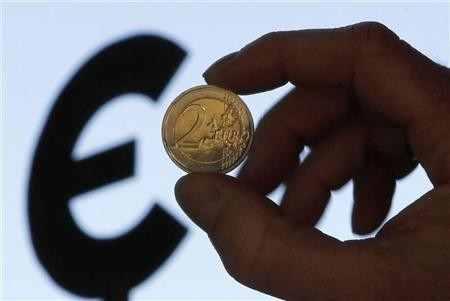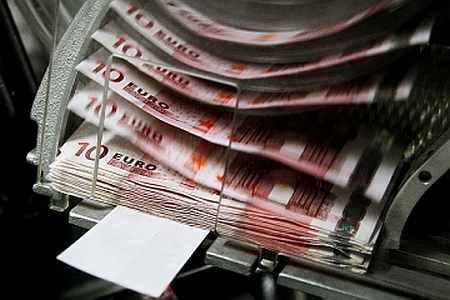
The developed world’s recovery, particularly that of the US, is not necessarily a positive for the Indian market, says Abheek Barua.
While the jury on India’s prospects for 2014 is likely to stay out until at least the election is over, it is possible to be a tad more sanguine about the future of the global economy.
For one thing, the American economy seems to be finally out of the woods. As the polar freeze thaws, Americans can get back to work confident that growth will pick up and unemployment will go down.
Whether this is the result of a sustained period of priming the monetary pump is the subject of another debate.
What seems to be somewhat clear, however, is that the process of repairing the balance sheets of both the federal government and private households, which was holding back the recovery, is almost over.
The US budget deficit incidentally dipped to 4.1 per cent of gross domestic product (GDP) in 2013 (the fiscal year in the US ends in September) compared to over 10 per cent in 2009.
...

While the federal government is unlikely to go on a spending spree and would probably try to consolidate the fiscal position further, the American consumer will be back shopping on Main Street.
Private consumption might lead a recovery, but it is just a matter of time before business investment responds to this rise in demand.
Capacity utilisation has been on an upswing for the past few quarters. The US Federal Reserve’s all-industry capacity utilisation index showed a rather healthy utilisation rate of 79 per cent in November.
There are a couple of other factors that have contributed to the US recovery. State and local government finances are in good shape and that means they are in a position to spend more.
Moreover, the American current account deficit is well under control. From a high of 6.2 per cent of GDP in 2005, it was down to 2.2 per cent of GDP by the third quarter of 2013.
...

This improvement needs to be analysed somewhat carefully to understand its implications for the rest of the world.
A large part is due to domestic extraction and use of shale oil and gas. America now produces about 90 per cent of the energy it consumes.
The second factor is reduced offshoring by American manufacturers in response to rising domestic productivity on the one hand and rising costs in traditional offshoring bases like China on the other. The other contributor is a marked change in “tastes”, in which US consumers are consciously buying goods produced in the US.
All these are somewhat permanent structural changes and could point to the fact that American growth will become less import-intensive going forward. This de facto protectionism could have important implications for global trade.
Europe’s recovery is likely to be more tepid. Compared to estimates of a contraction of 0.4 per cent in the euro zone’s GDP in 2013, the consensus pegs growth for this year at around one per cent.
...

However, two important factors need to be kept in mind about the nature of this growth. One, although Germany is still likely to lead the pack, growth is getting more broad-based and spreading to the so-called periphery.
Two, austerity-strapped economies, such as Greece and Portugal, are coming out of their bailout programmes this year and this will enable their governments to spend more. Greece, for instance, is likely to launch a sovereign bond issue in the market later this year.
This is not to say that Europe’s troubles are over. Deflation remains a risk, and the central bank might just be forced towards another round of liquidity infusion.
Progress on a banking union with centralised regulation has been tardy; unless the problem of the region’s zombie banks gets fixed, there will be lingering questions about the region’s macroeconomic and financial health. However, I would go with the view that the worst for the region, in terms of macroeconomic performance and the intensity of the risk, is over.
...

Japan’s economy seems to have responded to the dose of Abenomics it got last year. Consumer and business confidence is up. However, the impact of a consumption tax hike from five to eight per cent on growth due in April 2014 remains a risk and could take the sheen off Japan.
Where does this leave the emerging markets, then, for 2014? Things remain fuzzy both on the economic and political fronts.
The “fragile five”, or the BIITS (Brazil, Indonesia, India, Turkey and South Africa), are all characterised by large current account deficits and a host of “structural” problems, including poor governance and graft charges against senior politicians. What’s more, they all go to the polls in 2014. Until these elections are over, a pall of uncertainty will continue to hang over their economies and markets.
Second, China might have announced a slew of radical reforms late last year, but it will take a few years for these to actually impact growth. Until then, China will remain stuck in a situation in which its transition from a cheap manufacturing base for the rest of the world to one that is more reliant on internal demand will rein in growth.
...

Prudent macroeconomic policies – an integral part of the reform package – will constrain the government from providing a quick stimulus. This could mean periods of poor macro data prints from China that could affect attitudes towards other emerging markets — at least the Asian ones.
Third, as the “QE taper” intensifies through the year and the prospect of a rate hike in the US increases, the BIITS will have to keep interest rates high to prevent capital flight from their bond market. In short, the ability of emerging market central banks to fight slowdown through monetary easing is limited.
The upshot is that emerging markets are unlikely to find a place at the top of the pecking order of investment destinations.
The argument that the revival of the developed world, particularly the US, is somehow positive for the emerging world cannot be a general argument for all emerging markets.
For some, certainly — like Taiwan, which is a major supplier of intermediate goods to the US; or Mexico, which could (through the North American Free-Trade Agreement) gain from a manufacturing revival in the US. For others, like India, 2014 could turn out to be rocky.
The disappointing start to the year for our local stock markets perhaps gave us a taste of things to come. It might be sensible to interpret this in the broader global context rather than just in terms of the emergence of the Aam Aadmi Party upsetting the market’s election calculations.
The writer is with HDFC Bank. These views are personal.